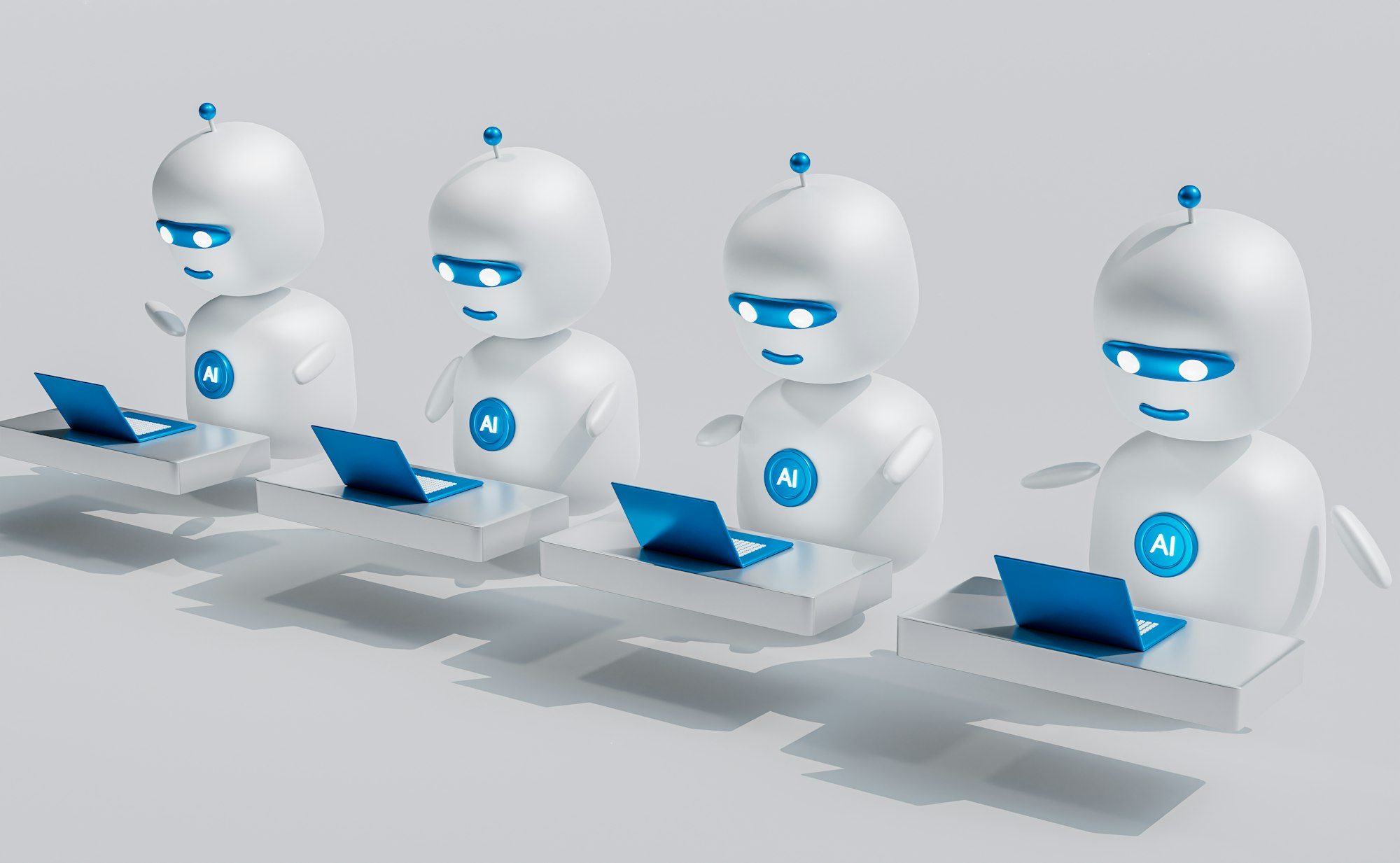Automating Repetitive Tasks with Chatbots: Revolutionizing Efficiency in Customer Service
Discover how automating repetitive tasks with chatbots can elevate customer service, drive efficiency, and revolutionize business operations.

In today's digital era, customer expectations are constantly evolving. They crave instant responses, consistent information, and service that's available around the clock. But how can businesses keep up without exhausting resources or compromising quality? The answer lies in the power of technology, particularly in automating repetitive tasks with chatbots. This integration isn't just a fleeting trend; it's a game-changer for companies seeking to enhance their customer service experience. Chatbots, especially those empowered with artificial intelligence, are at the forefront of this revolution, bridging the gap between customer demands and business capabilities. In this article, we'll unravel some exciting facts about chatbots and how they're reshaping the dynamics of modern customer service by offering unparalleled efficiency, accuracy, and 24/7 availability.
1. 24/7 Availability: The New Standard in Digital Customer Experience
In an interconnected world that never truly sleeps, customer demands have evolved. They're no longer confined to traditional business hours. The digital consumer operates across various time zones, holds differing schedules, and seeks immediate resolutions. Hence, 24/7 availability isn't just a luxury; it's fast becoming a necessity. Chatbots uniquely satisfy this demand by being constantly available, ensuring that customer queries are addressed anytime, anywhere.
Interesting Insight: Picture the nocturnal online shopper, browsing products at unconventional hours. Research from online retail platforms indicates that a significant chunk of shopping occurs post-midnight. Now, if this shopper has a question about a product at 2 a.m., a chatbot can provide instant clarity, potentially sealing a sale. Without round-the-clock chatbot support, this purchase opportunity could slip away.
2. Consistent Responses: Cultivating Trust in the Digital Landscape
In the vast expanse of digital interactions, consistency becomes a beacon of trust. When users interact with a service or brand, they're not merely seeking answers. They're looking for reliable and steady information with each interaction. By offering consistent, accurate responses, chatbots help in cementing a brand's image as dependable and trustworthy.
Interesting Insight: Consider the age-old game of 'Chinese Whispers'. A fun childhood game, yes, but also a lesson in how messages can get distorted as they pass along a chain. Translate this to customer service, and you'll find discrepancies that can cause dissatisfaction. Take, for instance, the intricate policies of airlines regarding baggage or cancellations. Conflicting information about baggage policies on separate interactions can lead to confusion and frustration. With chatbots, such variability is a non-issue, ensuring uniformity in every interaction.
3. Instant Replies: Catering to the Impulse of the Digital Native
The digital era has fostered a culture of instant gratification. Everything, from streaming a movie to ordering dinner, happens in a snap. This penchant for immediacy extends to customer interactions as well. Chatbots, with their ability to provide on-the-spot responses, tap into this cultural impulse, enhancing user experience and fostering loyalty.
Interesting Insight: A HubSpot study highlighted that a whopping 90% of customers deem an "immediate" response vital when they have customer service inquiries. But why settle for a 10-minute window when chatbots can deliver answers in mere seconds? For instance, when someone is checking the availability of a concert ticket or the specs of the latest tech gadget, an instantaneous answer from a chatbot can make the difference between a casual browse and a committed purchase.
4. Cost-Efficiency: Streamlining Operations in the Digital Domain
In the cutthroat digital marketplace, businesses are in a relentless pursuit of optimizing costs. Human resources, especially in customer support roles, can amount to significant expenses when considering recruitment, training, salaries, and benefits. Chatbots, with their one-time setup costs, provide a solution to this financial conundrum. They handle a plethora of queries without incurring monthly salaries or needing extensive training programs. This leads to a substantial reduction in overhead costs and a more efficient resource allocation for businesses.
Interesting Insight: A Gartner study predicted that by 2022, chatbots would be handling around 85% of customer service interactions. This shift isn't just about embracing technological advancements; it's rooted in substantial cost savings. For instance, a large e-commerce company could receive thousands of queries daily about order statuses. Employing a sizable team to handle these repetitive questions isn't as cost-effective as deploying chatbots. The latter not only manages the volume but also does so with unmatched financial efficiency.
5. Continuous Learning: The Adaptive Digital Assistant
One of the most captivating features of modern chatbots, especially those powered by AI, is their ability to evolve. These aren't static programs; they adapt, learn, and improve with each interaction. As they encounter a broader range of questions and scenarios, they refine their answers, ensuring that users receive the most accurate and relevant information. This self-improving nature of chatbots ensures that businesses can offer up-to-date support without constantly investing in manual updates.
Interesting Insight: Consider the world of finance, where regulations, product offerings, and market conditions can change rapidly. Traditional FAQ sections on websites can quickly become outdated, leading to misinformation. However, an AI-powered chatbot can continuously learn from new user queries and official updates. For example, if there's a change in loan interest rates or a new investment scheme introduced, the chatbot can promptly assimilate this information and provide users with the latest insights, ensuring they're always in the know.
Conclusion
As the digital frontier expands, businesses are constantly seeking tools that not only streamline operations but also enhance the customer experience. Chatbots have emerged as a powerful ally in this endeavor, revolutionizing the way we perceive and handle customer interactions. From providing consistent, round-the-clock support to dynamically adapting to the ever-evolving digital ecosystem, they've proven their mettle. Furthermore, platforms like Whelp have made the integration of these chatbots smoother, providing businesses with the necessary resources and expertise. Embracing chatbots, and leveraging platforms such as Whelp, is no longer a luxury—it's a strategic imperative for businesses aiming to thrive in the contemporary digital landscape.

